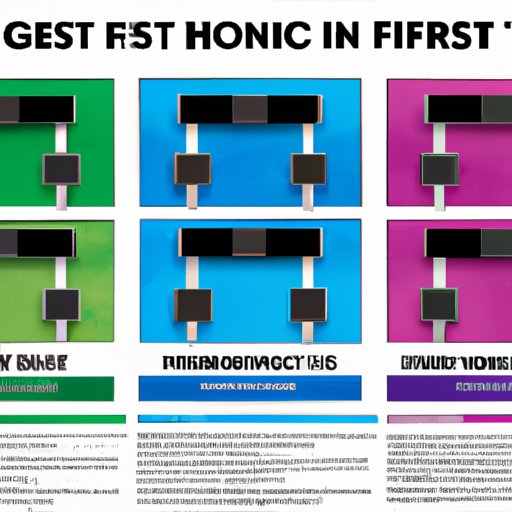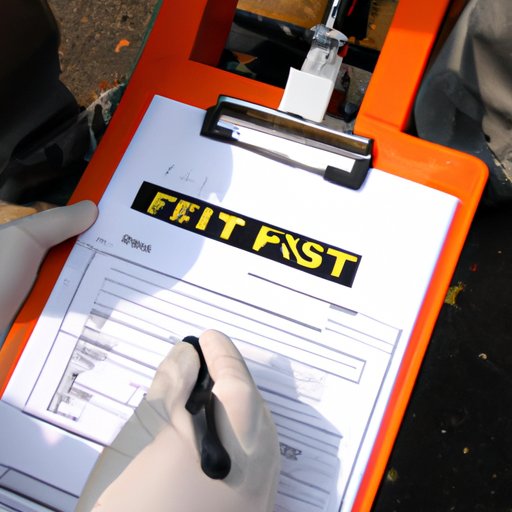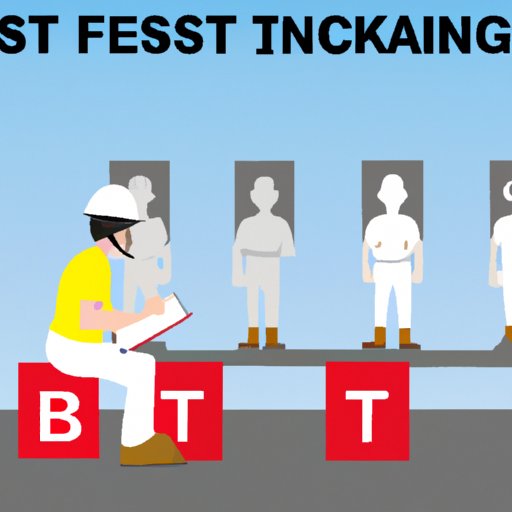Introduction
Fit testing is a critical part of any workplace’s health and safety strategy. It helps to ensure that workers are adequately protected from potential hazards in the environment, such as dangerous chemicals, dust, or other airborne particles. This article explores the basics of fit testing and its importance for worker safety. It will look at what fit testing is and how it works, as well as provide an overview of the different types of fit testing and the benefits of using it. Additionally, it will discuss the importance of fit testing and offer best practices for conducting successful fit tests in the workplace.
Exploring the Basics of Fit Testing: What is Fit Testing and How Does it Work?
Fit testing is a process used to assess the effectiveness of a respirator in protecting a worker from hazardous materials in the air. A respirator is a device designed to filter out airborne particles, such as dust or fumes, before they enter a worker’s lungs. The purpose of fit testing is to make sure that the respirator fits properly and works correctly to protect the worker from potential hazards in the environment.
The process of fit testing begins by having the worker put on the respirator and then taking measurements to determine if the respirator is a good fit. These measurements include facial size, shape, and features; the seal between the mask and the face; the type of respirator being used; and the size of the filter cartridges. Once these measurements have been taken, the worker can then be tested to see if the respirator fits properly and is providing adequate protection.
Fit testing is typically done using one of two methods. The first method is qualitative fit testing, which uses an odorless or tasteless gas or aerosol to test for leaks. If the gas or aerosol is detected outside of the respirator, it indicates that the respirator does not fit properly and needs to be adjusted. The second method is quantitative fit testing, which uses a machine to measure the amount of leakage around the respirator. Quantitative fit testing is more accurate than qualitative fit testing but is more expensive and time-consuming.
An Overview of Fit Testing: Understanding the Benefits of Fit Testing for Health and Safety
Fit testing is important for worker safety because it ensures that the respirator is properly fitted and working correctly to protect the worker from potential hazards in the environment. Without fit testing, a worker could be exposed to hazardous materials that would otherwise be filtered out by the respirator. This could lead to serious health issues, such as respiratory illnesses or even death.
In addition to protecting the worker from potential hazards, fit testing also provides employers with peace of mind. According to the Occupational Safety and Health Administration (OSHA), “Fit testing helps employers ensure that their employees are wearing the correct respirator and that it fits them properly.” 1 This helps to reduce the risk of illness or injury due to improper use of the respirator.

The Different Types of Fit Testing: Identifying Which Fit Test is Right for Your Needs
There are several different types of fit testing available, each with its own advantages and disadvantages. Qualitative fit testing is the most common type of fit testing and is generally the least expensive option. However, it is less accurate than quantitative fit testing and may not be suitable for all workplaces. Quantitative fit testing is more accurate and reliable than qualitative fit testing, but it is also more expensive and time-consuming.
Other types of fit testing include fit factor testing, which measures the amount of air leakage around the respirator, and portacount testing, which measures the amount of particles that are blocked by the respirator. Each type of fit testing has its own advantages and disadvantages, so it is important to identify the best type of fit testing for your workplace.

The Importance of Fit Testing: Why Fit Tests are Necessary for Worker Safety
Fit testing is an essential part of any workplace health and safety program. Without fit testing, workers are at risk of being exposed to hazardous materials that could cause serious harm. In addition, without fit testing, employers cannot be sure that their employees are properly protected from potential hazards in the environment.
According to OSHA, “It is essential for employers to provide a safe and healthful work environment for their employees. This includes ensuring that employees wear the appropriate respirator for the job and that the respirator fits them properly.” 2 Fit testing helps to ensure that workers are adequately protected from potential hazards in the environment, which is why it is so important.

Fit Testing Best Practices: How to Ensure Successful Fit Tests in the Workplace
Fit testing is an important part of any workplace health and safety program, but it is only effective if it is conducted properly. Here are some tips for conducting successful fit tests in the workplace:
- Train workers on how to properly use the respirator and conduct fit tests.
- Make sure the respirator fits properly before beginning the test.
- Follow the manufacturer’s instructions for conducting the fit test.
- Ensure that the test area is free of contaminants.
- Conduct regular fit tests to ensure that the respirator is still effective.
Following these best practices can help to ensure that fit tests are conducted safely and effectively, and that workers are adequately protected from potential hazards in the environment.
Conclusion
Fit testing is an essential part of any workplace health and safety program. It helps to ensure that workers are adequately protected from potential hazards in the environment, and it provides employers with peace of mind that their employees are using the correct respirator and that it fits them properly. There are several different types of fit testing available, and it is important to identify the best type of fit testing for each situation. Additionally, it is important to follow best practices when conducting fit tests in order to ensure successful fit tests and adequate protection for workers.
(Note: Is this article not meeting your expectations? Do you have knowledge or insights to share? Unlock new opportunities and expand your reach by joining our authors team. Click Registration to join us and share your expertise with our readers.)
